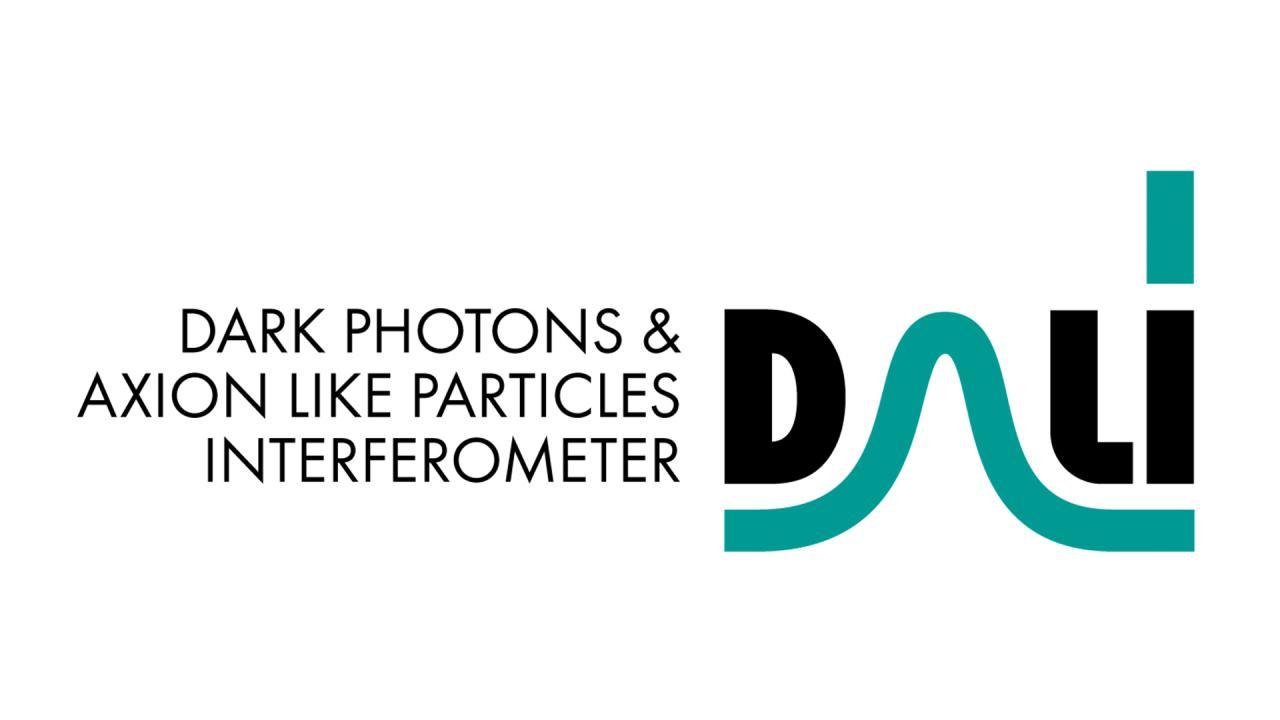General
In addition to being a long-postulated particle that satisfactorily explains the absence of the neutron’s dipole moment observed in laboratories while addressing the charge-parity problem in quantum chromodynamics, the axion emerges as a promising dark matter candidate due to its low mass and weak interaction with ordinary matter. Dark matter is a non-luminous substance believed to make up one-fourth of the known universe. If the axion constitutes the dark matter, haloscopes—magnetized detectors that convert local virialized axions into photons—are the most promising experimental approach for their first direct detection.
The Dark photons & Axion-Like particles Interferometer (DALI) proposes a new experimental setup to detect wavy dark matters: the magnetized phased-array (MPA). In the MPA haloscope, a large flat mirror acting as a focal plane is housed in a solenoid-type superconducting magnet. A narrow-band signal originates from virialized axions that are converted into long-wavelength photons via the inverse Primakoff effect (or through kinetic mixing of paraphotons, a different dark matter candidate). The signal from each individual antenna forming the MPA is combined in a post-processing by means of radio interferometry -like methods. A series of microwave resonators can be also magnetized in the optical path to enhance the faint induced signal, for which we construct a tunable multilayer Fabry-Pérot resonator that allows for signal power enhancement factors in excess of 50,000 at the high band of the experimental range, say, 25-250 microelectronvolt (6-60 GHz), eventually broader. In this manner, DALI will reach sensitivity to benchmark dark matter candidates in a sector non-accessible to previous experiments. The project introduces other novelties to dark matter searches, such as telescopic directionality.
The search for ultra-high-frequency gravitational waves is a peripheral goal of the project. DALI's sensitivity to high-frequency gravitational waves arises from its mechanism of converting gravitons into photons. This research aims to provide insights into early universe processes, thereby offering valuable information about the Universe at its very beginnings.
DALI, currently in the design and prototyping phase, is planned to be installed at the Teide Observatory within a protected environment against spurious radio sources, known as CMBlab.
Members
Results
“A dark matter telescope probing the 6 to 60 GHz band”, Journal of Cosmology and Astroparticle Physics, Vol. 075. DOI: 10.1088/1475-7516/2021/04/075.
“Experimental measurement of the quality factor of a Fabry-Pérot open-cavity axion haloscope”. Journal of Instrumentation, Volume 19 (2024) P01022. DOI 10.1088/1748-0221/19/01/P01022.
“Discovery prospects with the Dark-photons & Axion-Like particles Interferometer.” Phys. Rev. D 109 (6), 062002. DOI: 10.1103/PhysRevD.109.062002.
“A forecast of the sensitivity of the DALI Experiment to Galactic axion dark matter”. Symmetry 16 (2), 163. DOI: 10.3390/sym16020163.
“Echo-free quality factor of a multilayer axion haloscope”. Phys. Rev. D 110, 072013. DOI: 10.1103/PhysRevD.110.072013.
“DALI sensitivity to streaming axion dark matter”. Phys. Rev. D (accepted for publication 03/12/2024).
Scientific activity
Related publications
No related publications were found.Related talks
No related talks were found.Related conferences
No related conferences were found.








